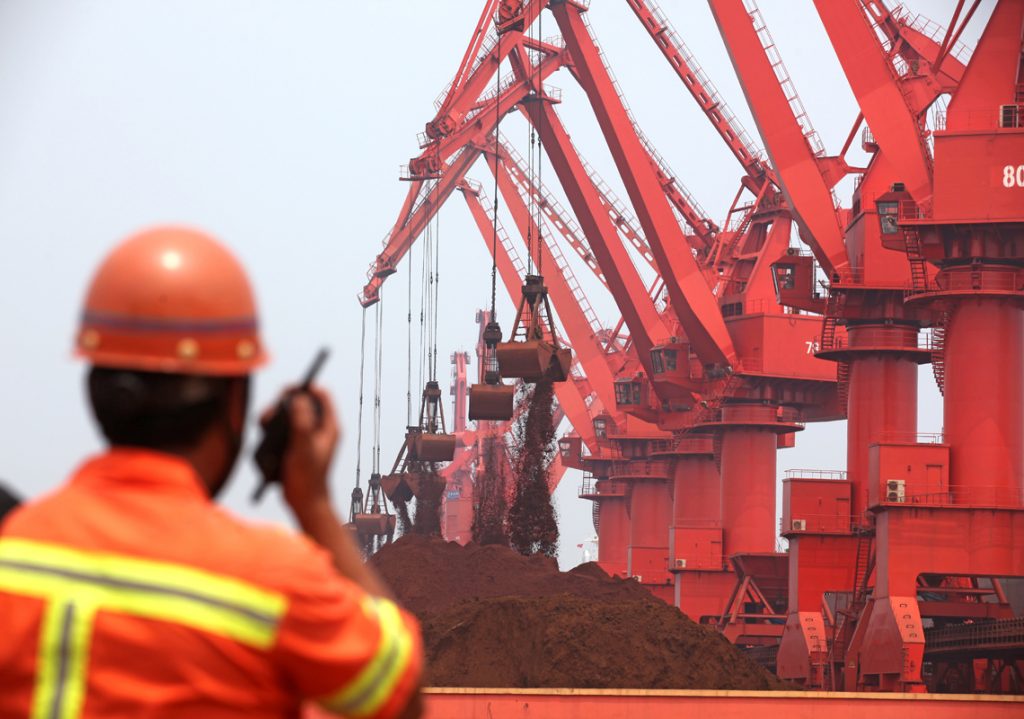
Port of Qinqdao, China. Stock image.
Iron ore prices jumped more than 4% on Tuesday, extending gains spurred by improved steel profit margins in China and disappointing output figures from Rio Tinto and Vale.
According to Fastmarkets MB, Benchmark 62% Fe fines imported into Northern China (CFR Qingdao) were changing hands for $189.61 a tonne on Tuesday, up 4.29% from the previous day – the highest level since 2011.
The high-grade Brazilian index (65% Fe fines) also advanced to a record high of $222.80 a tonne.
September iron ore on China’s Dalian Commodity Exchange ended the daytime trading session 3.6% higher at 1,100 yuan ($169.28) a tonne, following news that China’s crude steel production jumped 19% last month from a year earlier to near a record.
The nation’s output of the alloy is booming at the same time as a pollution crackdown has lifted prices and benefited profit margins at mills.
“The short-term outlook for iron ore prices remained strong”
Daniel Hynes, senior commodities strategist, ANZ Banking Group
“Incredibly healthy Chinese steel margins have been the real driving force behind iron ore’s move higher over the past week,” managing director at Navigate Commodities in Singapore Atilla Widnell told Reuters.
Rio Tinto’s iron ore output in the March quarter dropped 2% on an annual basis, while production at Vale fell 19.5% from the previous quarter.
BHP Group Ltd on Wednesday reported a near 2% dip in third-quarter iron ore production but said full-year output is expected to be at the upper end of its forecast.
“With the market relatively tight at the moment, it will certainly see any failure to meet current guidelines as relatively positive for the price,” Daniel Hynes, senior commodities strategist at ANZ Banking Group told Bloomberg.
Vale and Rio both maintained their forecasts for full-year production, though a slower-than-expected recovery at Vale could see the market reset its expectations, he said.
Rio cautioned that its guidance for the annual output of up to 340 million tonnes was subject to logistical risks associated with bringing 90 million tonnes of replacement mine capacity on stream. It also said that Tropical Cyclone Seroja had impacted its Pilbara mine and port operations in April.
It was a “mediocre quarter” for Rio, Tyler Broda, mining analyst at RBC Capital Markets, said in a note. Quarterly production was 6% less than the bank’s estimate.
“Not all that much is going in the right direction from a bottom-up basis for Rio Tinto as they continue to tackle the various challenges at their operations and projects, but main commodities iron ore and aluminum are both benefiting from the China decarbonisation theme,” Broda said.

The iron ore market has kept a wary eye on the still-tight global supply in the wake of a Vale tailings dam disaster in 2019 that had prompted mine closures for safety checks in Brazil.
However, real-time shipping data showed an improvement in cargo volumes from the world’s top suppliers. Iron ore shipments by Australia and Brazil recovered last week after two weeks of declines, according to Mysteel consultancy.
The short-term outlook for iron ore prices remained strong, ANZ’s Hynes said, with Chinese steel mills content to accept current high prices for their main feedstock while their margins were so strong. However, he added the cost of ore was now well above fair value, with the risk of a pullback later in the year if Beijing’s plans to curb steel production to control greenhouse gas emissions start to impact demand.
“If we saw a 1% fall in Chinese steel production that would potentially wipe out about 15-20 million tonnes of iron ore,” said Hynes.
(With files from Reuters and Bloomberg)
No comments:
Post a Comment